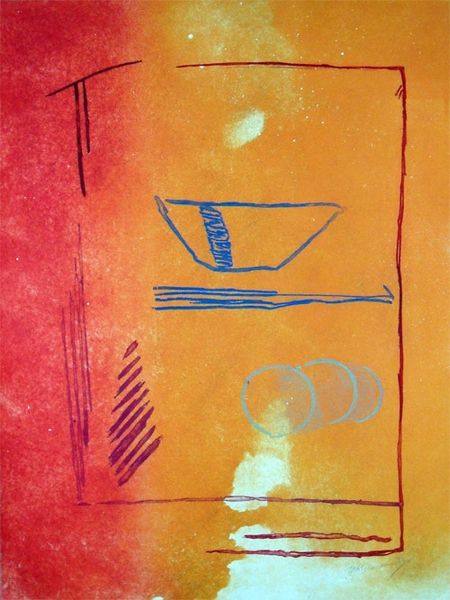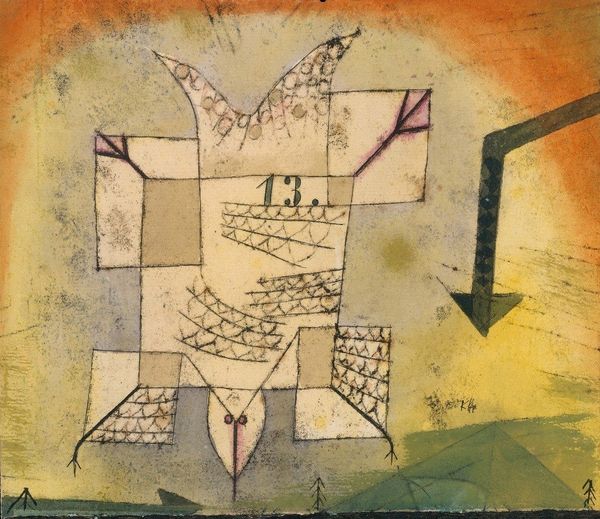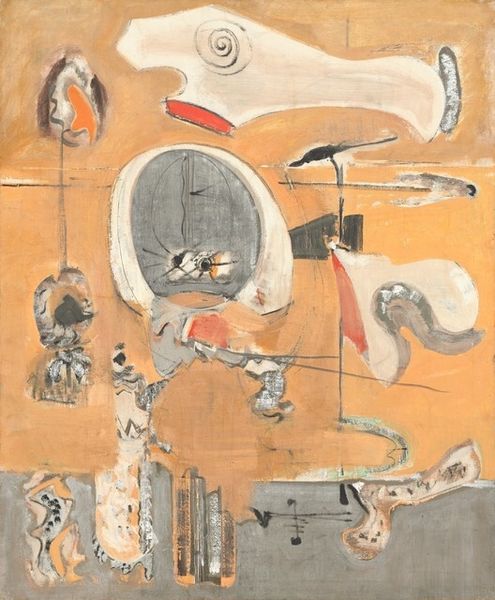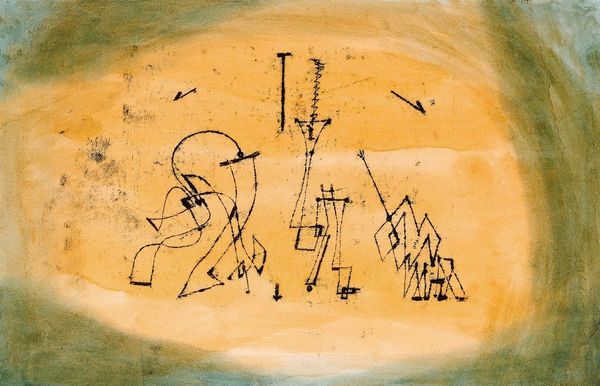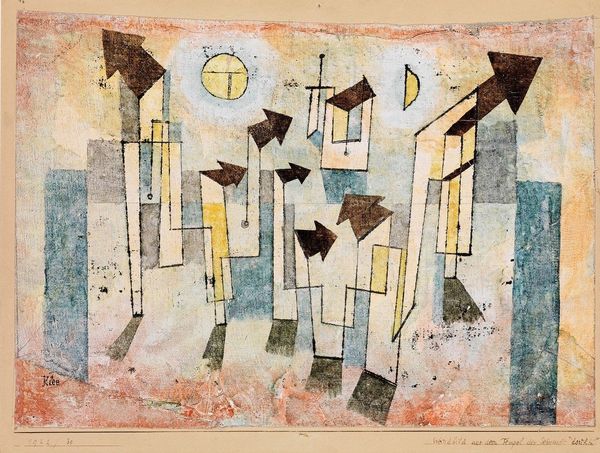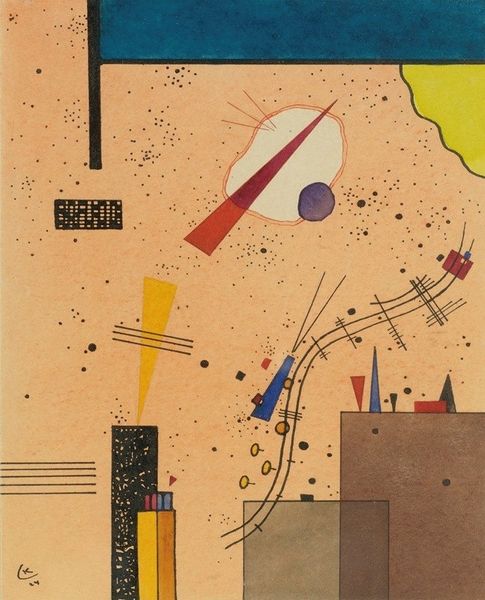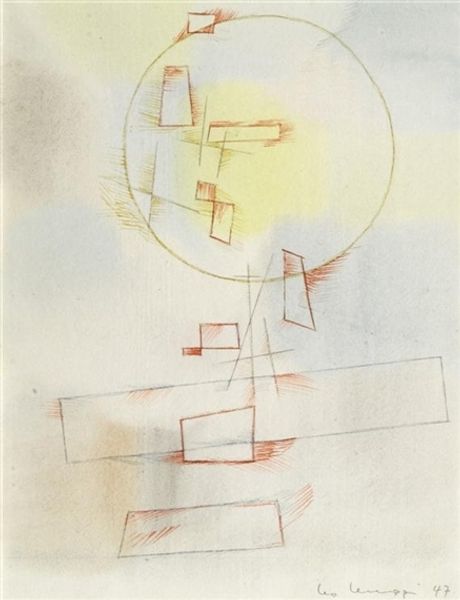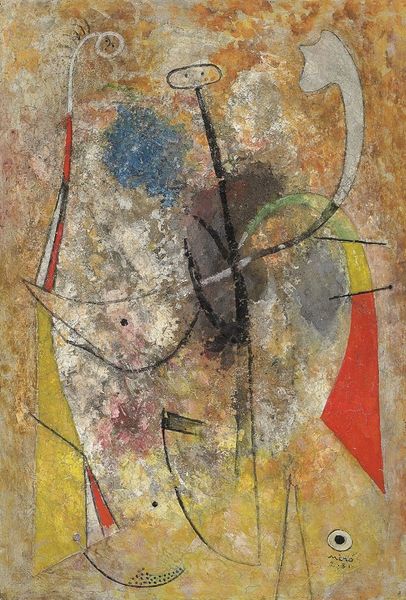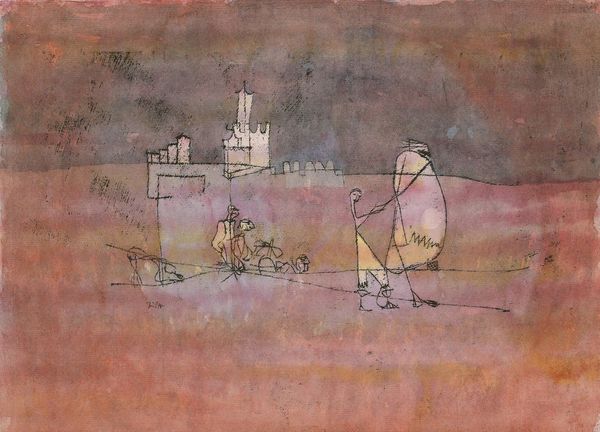
drawing, paper, watercolor
#
drawing
#
water colours
#
landscape
#
paper
#
abstract
#
watercolor
#
coloured pencil
#
expressionism
#
line
#
modernism
Copyright: Public Domain: Artvee
Editor: This is "Tree Culture," a watercolor and colored pencil drawing on paper created by Paul Klee in 1924. The earthy tones create a somewhat mystical feeling. What historical context can help us better appreciate this piece? Curator: Well, looking at "Tree Culture" we see Klee engaging with the modern world’s shifting relationship with nature. He created this piece during the interwar period when many artists were grappling with the trauma of World War I and the rapid industrialization of society. Does that make you think of anything? Editor: The simplification, almost child-like quality, does give it a feeling of a return to innocence, a distancing from the war. The architectural shapes interwoven with the trees suggests an imposition on nature. Curator: Exactly. Klee taught at the Bauhaus during this time, which advocated for uniting art, craft, and technology. Consider the title: "Tree Culture." The pairing of “tree,” something natural, with "culture," which suggests cultivation, change through human intervention... Doesn't it bring up some questions? Editor: Definitely! The composition suggests a subtle critique of humanity's impact on nature, presenting it almost as a stage set. Do you think Klee intended a political message, or was it more of a personal reflection? Curator: I believe Klee intended the artwork as a nuanced meditation. His position within the Bauhaus, straddling the line between art and industry, gave him unique insight. He used his art to explore complex questions about our place in the world rather than promote any political message. Editor: That’s fascinating. I hadn't considered how the Bauhaus context would influence the meaning. Curator: Precisely. By looking at art through this lens, we are better equipped to understand not only Klee's artistic intentions but also the public role of art during the turbulent interwar period. Editor: Thank you; I've definitely gained a deeper perspective of Klee's work and how social history informs artistic interpretation.
Comments
No comments
Be the first to comment and join the conversation on the ultimate creative platform.
